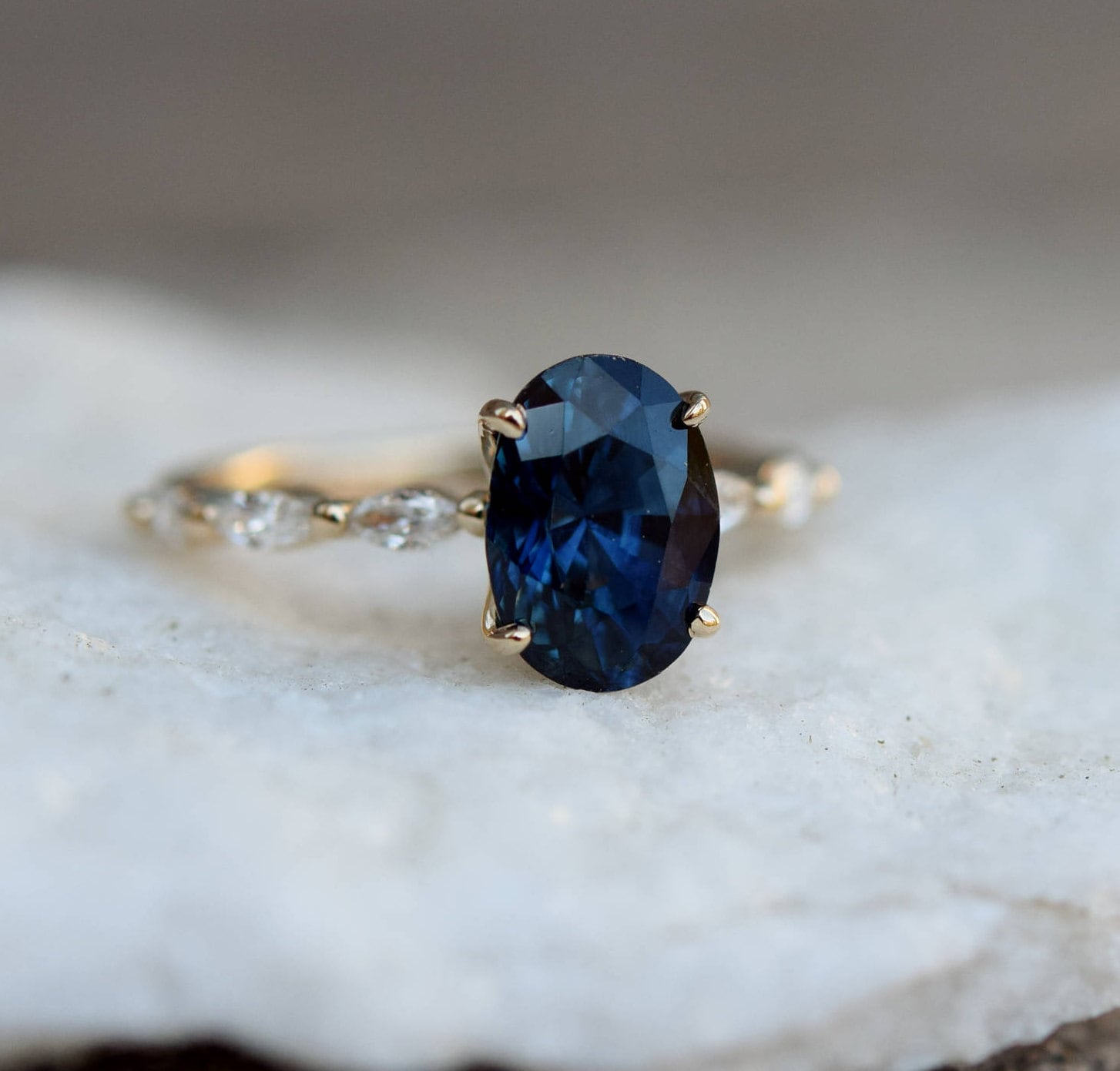In this day and age, ready to buy engagement rings have arisen as a strong image of affection, embodying both timeless style and contemporary qualities. As couples look to commend their unique stories, the charm of lab-grown diamonds offers an attractive alternative to traditionally mined stones. These ethically obtained diamonds are a demonstration of present day innovation as well as an embodiment of individual commitment, offering a dazzling choice that aligns with the present conscientious consumer.
Table of Contents
The Rise of Lab-Grown Diamonds in Engagement Adornments
Lab-grown diamonds have steadily gained popularity, particularly in the domain of engagement rings. This pattern can be attributed to a few variables, including their ethical production, affordability, and environmental sustainability. With a similar physical, chemical, and optical properties as regular diamonds, lab-grown diamonds are indistinguishable from their mined partners, making them a compelling option for the individuals who look for quality without compromise.
The Science Behind Lab-Grown Diamonds
Lab-grown diamonds are created using progressed technological cycles that mimic the normal conditions under which diamonds structure. The two primary strategies — High-Strain High-Temperature (HPHT) and Chemical Fume Deposition (CVD) — produce diamonds that are virtually identical to those tracked down in nature. This meticulous interaction guarantees that every lab diamond exhibits a similar brilliance, fire, and scintillation that one would anticipate from a characteristic diamond, making them an ideal choice for engagement rings.
Ethical and Environmental Considerations
One of the most compelling motivations to pick a lab diamond engagement ring is the ethical and environmental benefits. Traditional diamond mining has for quite some time been associated with significant environmental destruction and human rights mishandles. Conversely, lab-grown diamonds are created in controlled environments, with minimal ecological impact. This makes them an appealing option for couples who are conscious of their environmental footprint and are looking to settle on a responsible decision without sacrificing quality or magnificence.
Cost-Effectiveness of Lab Diamond Engagement Rings
Lab-grown diamonds are often more reasonable than their regular partners, typically costing 30-40% less. This price difference doesn’t mirror a compromise in quality yet rather the efficiencies in the production cycle. Thus, couples can bear the cost of bigger, higher-quality stones within their budget, allowing for more prominent flexibility and creativity in the design of their engagement rings.
Choosing the Ideal Lab Diamond Engagement Ring
When selecting a lab diamond engagement ring, it is essential to consider the very criteria that apply to normal diamonds — the Four Cs: Cut, Variety, Clarity, and Carat Weight. These elements determine the general appearance and worth of the diamond.
Cut: The Way to Brilliance
The cut of a diamond is ostensibly the most crucial figure determining its magnificence. A very much cut lab diamond will mirror light beautifully, creating the radiance and fire that diamonds are known for. Well known cuts for engagement rings include the round brilliant, princess, emerald, and oval cuts, each offering a unique esthetic allure.
Variety: The Unobtrusive Shade of Purity
Lab-grown diamonds, like normal diamonds, are evaluated on a variety scale from D (dry) to Z (light yellow or brown). Most consumers lean toward diamonds in the D to F range for engagement rings, as these are virtually boring and exhibit a stunning brilliance. Nonetheless, lab diamonds are likewise available in extravagant tones, like blue, pink, and yellow, offering a striking and unique choice for the people who desire something genuinely distinctive.
Clarity: The Window of Purity
Clarity alludes to the presence of internal or outer imperfections, known as inclusions and blemishes. Lab diamonds typically have less inclusions than regular diamonds, as their controlled production environment minimizes the possibilities of imperfections. Clarity is evaluated on a scale from Faultless (FL) to Included (I1, I2, I3), with higher clarity grades being more desirable. For engagement rings, diamonds with a clarity grade of VS2 (Slightly Included) or higher are suggested, as they seem immaculate to the unaided eye.
Carat Weight: The Proportion of Substance
Carat weight estimates the size of the diamond. While bigger diamonds are often more desirable, it is essential to offset carat weight with the other Cs to guarantee a proportional and esthetically pleasing stone. The typical engagement ring highlights a diamond somewhere in the range of 1 and 2 carats, yet the choice ultimately relies upon individual inclination and budget.
Designing Your Lab Diamond Engagement Ring
The excellence of lab diamond engagement rings lies in the stone as well as in the design of the ring itself. From classic solitaires to intricate radiance settings, the possibilities are perpetual.

